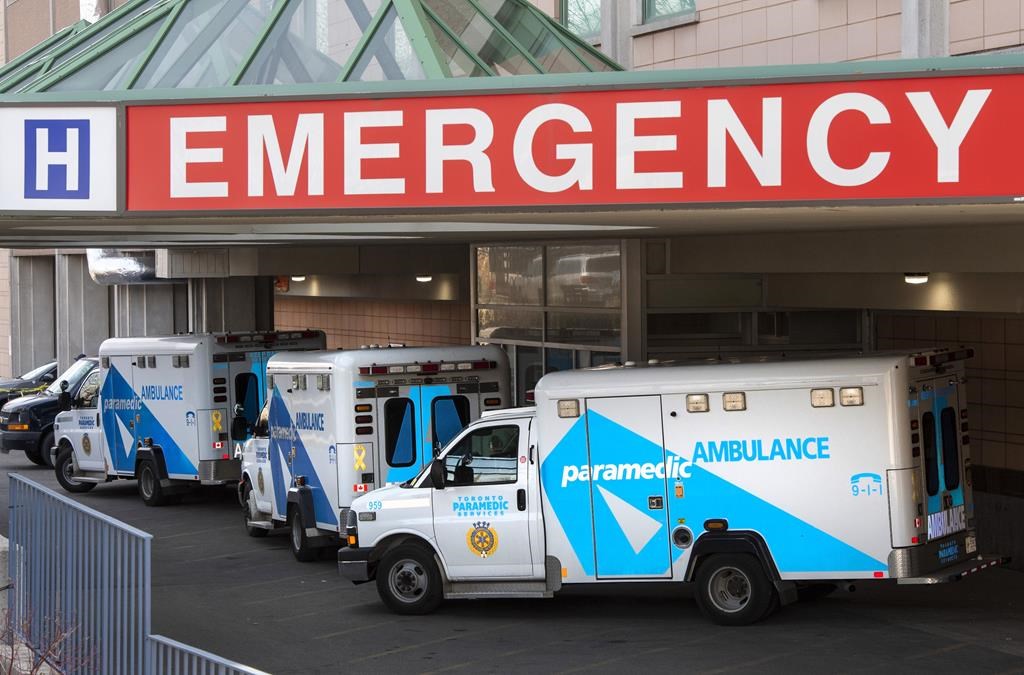TORONTO — The Ontario auditor general’s office published its annual report Wednesday. Here are some of the highlights:
– One in five emergency visits involved patients going to the ER for non-urgent issues because they didn’t have a family doctor or access to other services.
– Between 2018-19 and 2022-23, northern hospitals increased usage of nurses from staffing agencies by 25 times – the agencies charge three times the rate of an hourly nurse – compared to an increase of about 2 1/2 times for hospitals in the rest of the province.
– Between July 2022 and June 2023, there were more than 200 unplanned temporary emergency department closures involving 23 hospitals, mostly in rural or remote areas and mostly due to nursing and doctor shortages.
– Nursing and doctor shortages led to obstetrics services closing at 10 hospitals in the north between July 2022 and September 2023. Four were still closed as of September, with three of those closed for more than one year.
– Emergency room patients wait on average two hours to be assessed by a physician, up 30 minutes in the last 10 years, and wait more than 24 hours if they require an inpatient bed.
– The government made decisions about the Ontario Science Centre’s move to Ontario Place with preliminary and incomplete cost information, and insufficient input from key stakeholders.
– The government made “significant” changes to energy, land-use planning and housing policies without enough environmental consultation.
– International students account for 18 per cent of York University’s total enrolment, but almost half of its revenue. “Reliance on international students for tuition revenue exposes the university to financial risks if enrolment declines due to factors such as shifts in relationships with other countries, or limits on travel for health reasons,” the auditor’s report said.
– In 2022, drivers who received two or more suspensions in the previous year had a fatal collision rate six times higher than the general driver population.
– Ontario eliminated certain manoeuvres from driver exams, such as parallel parking and three-point turns, to reduce backlogs caused by COVID-19, but the reduced test still remains in place long after the delays were cleared.
– Only 35 per cent of the aggregate pits and quarries – where sand, gravel, stone and rock needed for construction are gathered – that the auditor’s office reviewed had been inspected by the Ministry of Natural Resources and Forestry in the last five years. “Despite high rates of non-compliance, inspectors rarely referred cases for enforcement,” the report found.
– The Metro Toronto Convention Centre and the Ottawa Convention Centre have lost the opportunity to host 19 events since 2018 that could have brought an estimated $52 million in economic impact to the regions, because they had set their bid price too high.
– The Ministry of Tourism, Culture and Sport doesn’t always approve tourism support in a timely way for arts, food and music festivals, resulting in cancellations.
– The Ministry of Tourism, Culture and Sport gave at least $1.1 million in COVID-19 support to recipients in the tourism industry that were not eligible.
– The Travel Industry Council of Ontario’s Travel Industry Compensation Fund costs $1 million to administer and gave $350,000 on average each year in compensation to consumers over the past 10 years.
– Thirty per cent of the province’s registered travel agencies and wholesalers haven’t been inspected by the Travel Industry Council of Ontario in the last 10 years and some haven’t been inspected in more than 20 years.
This report by The Canadian Press was first published Dec. 6, 2023.



